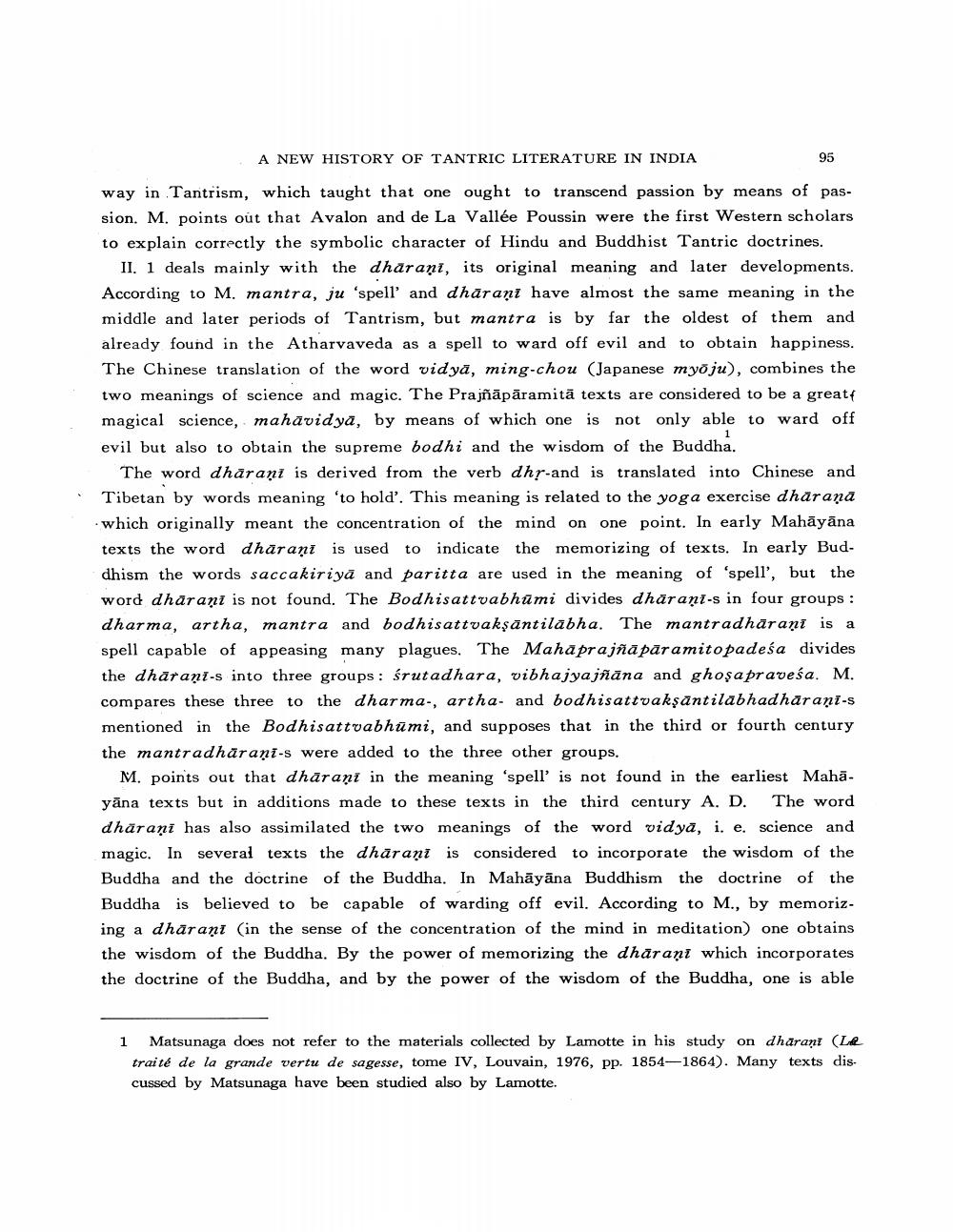Book Title: New History Of Tantric Lieterature In India Author(s): J W De Jong Publisher: J W De Jong View full book textPage 5
________________ A NEW HISTORY OF TANTRIC LITERATURE IN INDIA way in Tantrism, which taught that one ought to transcend passion by means of passion. M. points out that Avalon and de La Vallée Poussin were the first Western scholars to explain correctly the symbolic character of Hindu and Buddhist Tantric doctrines. II. 1 deals mainly with the dharani, its original meaning and later developments. According to M. mantra, ju 'spell' and dharani have almost the same meaning in the middle and later periods of Tantrism, but mantra is by far the oldest of them and already found in the Atharvaveda as a spell to ward off evil and to obtain happiness. The Chinese translation of the word vidya, ming-chou (Japanese myōju), combines the two meanings of science and magic. The Prajñāpāramitā texts are considered to be a great magical science, mahavidya, by means of which one is not only able to ward off evil but also to obtain the supreme bodhi and the wisdom of the Buddha. 1 95 The word dharani is derived from the verb dhr-and is translated into Chinese and Tibetan by words meaning 'to hold'. This meaning is related to the yoga exercise dhāraṇā which originally meant the concentration of the mind on one point. In early Mahāyāna texts the word dhāraṇī is used to indicate the memorizing of texts. In early Buddhism the words saccakiriya and paritta are used in the meaning of 'spell', but the word dharani is not found. The Bodhisattvabhumi divides dharani-s in four groups : dharma, artha, mantra and bodhisattvakṣāntilabha. The mantradhāraṇī is a spell capable of appeasing many plagues. The Mahaprajñāpāramitopadeśa divides the dharani-s into three groups: śrutadhara, vibhajyajñāna and ghoṣapravesa. M. compares these three to the dharma-, artha- and bodhisattvakṣāntilabhadhāraṇī-s mentioned in the Bodhisattvabhumi, and supposes that in the third or fourth century the mantradharani-s were added to the three other groups. M. points out that dharani in the meaning 'spell' is not found in the earliest Mahāyana texts but in additions made to these texts in the third century A. D. The word dharani has also assimilated the two meanings of the word vidya, i. e. science and magic. In several texts the dharani is considered to incorporate the wisdom of the Buddha and the doctrine of the Buddha. In Mahāyāna Buddhism the doctrine of the Buddha is believed to be capable of warding off evil. According to M., by memorizing a dhāraṇī (in the sense of the concentration of the mind in meditation) one obtains the wisdom of the Buddha. By the power of memorizing the dhārant which incorporates the doctrine of the Buddha, and by the power of the wisdom of the Buddha, one is able 1 Matsunaga does not refer to the materials collected by Lamotte in his study on dharani (Le traité de la grande vertu de sagesse, tome IV, Louvain, 1976, pp. 1854-1864). Many texts discussed by Matsunaga have been studied also by Lamotte.Page Navigation
1 ... 3 4 5 6 7 8 9 10 11 12 13 14 15 16 17 18 19 20 21 22 23
